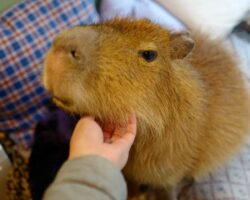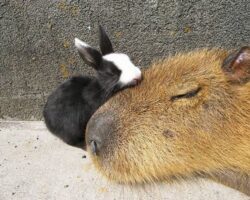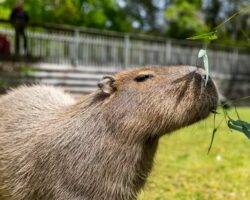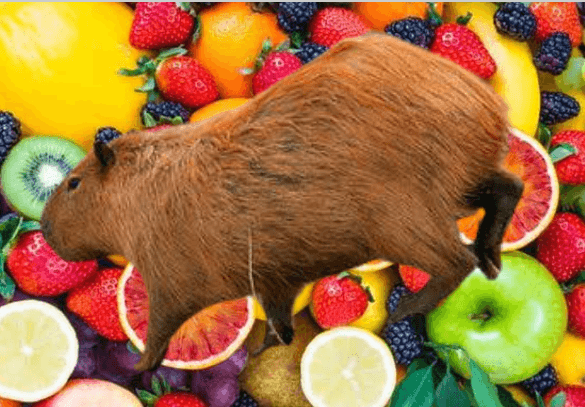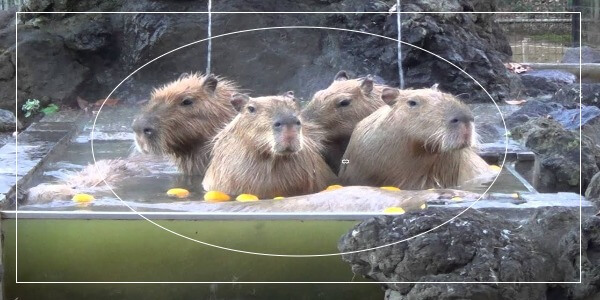One of the most popular capybara facts is that they are the largest rodents in the world. That’s true.
The capybara (Hydrochoerus hydrochaeris) hails from South America and is a member of the Hydrochoeridae family. The capybara shares several things in common with guinea pigs and beavers.
The capybara can be spotted in dense forests, swamps, and savannas, and enjoy staying close to water bodies such as lakes, streams, rivers, ponds, etc. They enjoy eating aquatic plants and other forms of fresh vegetation.
In this article, we will uncover some facts about this giant rodent and find out how big they can get.
How Big Is The Capybara?
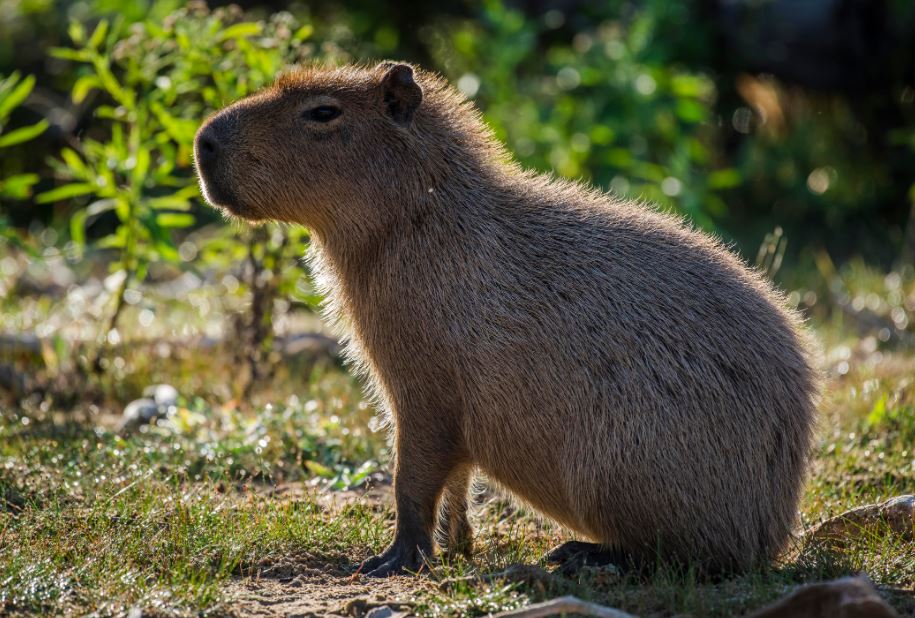
Arguably, the capybara is the world’s largest rodent. Apart from their large size, they put on a lot of weight. While the capybara doesn’t share the same size as other rodents, they typically grow as large as big dogs.
The capybara looks like the bigger version of their cousins, the guinea pigs. They do not have tails or have the wedge-shaped faces of most rodents. Rather, the face of the capybara is similar to that of a pig.
On average, the capybara measures 106 to 134cm in length and weighs somewhere between 35 to 66kg like a small dog.
Depending on the gender, the capybara can weigh around 60 to 174 lbs (27 to 79 kg). The male capybara tends to be bigger than the female ones. The biggest capybara ever recorded was found to weigh 201lb (91 kilograms).
Offspring
The capybara has an interesting reproduction cycle. The gestation period of a female capybara can last for over 120 days.
They can give birth to multiple babies; in some cases, the capybara can birth to up to eight pups. The pups weigh 2 to 3 lbs (1 to 1.5 kg) at the time of birth.
Another interesting fact about baby capybaras is that they have teeth at birth. These babies are weaned at 16 weeks and on the 18th week, they weigh as much as 40 kg (88 lbs).

The pups attain maturity as they approach a year old. When the pups turn one year old, they tend to leave their parent’s group and search for new herds to join. The male capybara sexually matures between 15 and 24 months while their female counterparts reach sexual maturity around 7 to 12 months.
Depending on their living conditions, the capybara can live between six to over 12 years.
Natural Environment and Diet
The capybara is a semi-aquatic animal by nature, so they require access to water bodies to keep their dry skin moist and warm always.
Capybaras thrive in places with proximity to water sources such as marshes, swamps, river banks, streams, lakes, and estuaries in Central and South America.
As herbivorous animals, the capybara strictly eats vegetation, which consists of mainly grasses, water plants, melons, fruits, grain, squash, tree barks, and other delicious plants.
The capybara enjoys a specialized diet of different plants and vegetation. They can eat up to 8 pounds of fresh grasses per day. More than 80% of the capybara’s diet consists of just 5 different plant species. This means the capybara have their favorite grasses they enjoy as well as poisonous grasses they avoid.
Also known as water hogs, the capybara is blessed with a set of webbed feet, which helps them run from danger and swim in the water. The capybara enjoys immersing itself in water and can sometimes take a long nap in water.
If you don’t know, capybaras are excellent swimmers. They enjoy spending a significant portion of their time cooling off in water. Capybara tends to become unhappy staying in an area where water bodies are unavailable.
One of the special features of the capybara is its ability to hold its breath underwater. They do this to evade danger and hide from predators. They also have sharp claws that are vital in climbing trees and surfaces.
How Much Do Capybaras Weigh?
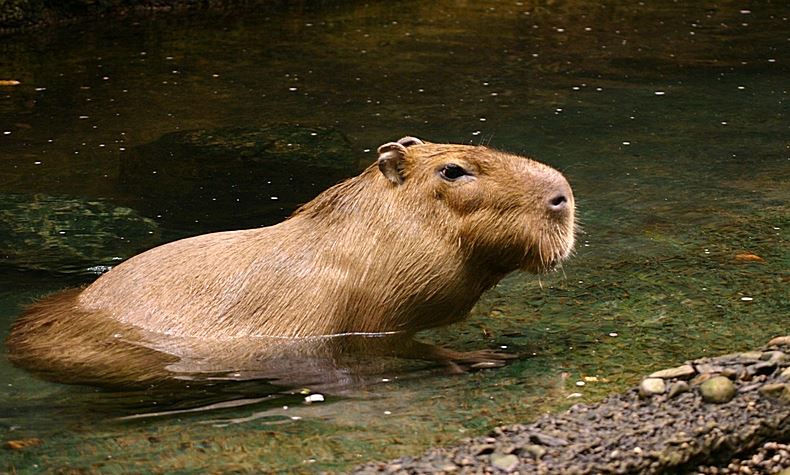
An adult male capybara can weigh between 65 to 130 pounds. In some cases, there are capybaras that weigh up to 150 pounds.
The capybara’s gigantic size makes earn the title of the largest rodent in the world. Some capybaras are bigger than most dogs. Generally, the male capybara is known to be bigger in size than the females. The adult female capybara weighs around 50 to 112 pounds.
How Much Do Baby Capybaras Weigh?
Female capybara tend to give birth to 3 or 4 babies at once. Sometimes, they can give birth to one or two pups but these rodents are expected to produce multiple babies. The females can have as many as seven or eight babies in a litter.
The baby capybara is very small at the time of birth and can weigh anywhere between two and four pounds. Surprisingly, the teeth of the pup are present after birth. The baby capybaras also take their first steps within a few hours after their birth.
While the baby capybara depends on its mother for food at the early stage of its life, it starts eating solid food several weeks after its birth. By the time the young capybara is 18 weeks old, it puts on a lot of weight, typically weighing around 88 pounds.
The capybara size is influenced by a variety of factors, including its age, gender, health, dietary habits, and living conditions. Generally, sick and older capybaras are likely to weigh less than young and healthier capybaras.

Typically, the male capybaras are bigger and weigh more than the females. On average, the male capybaras weigh between 100 and 130 pounds while the females weigh around 90 and 115 pounds.
Young capybaras are expected to reach full maturity at 18 months. During this period, they attain sexual maturity, meaning they can mate and reproduce.
How Much Does The Lesser Capybaras Weigh?
They are two common capybara breeds: the Hydrochoerus hydrochaeris (the bigger capybara), which is discussed for the most part of this article, and the Hydrochoerus isthmius (the lesser capybara).
The lesser capybara can be found in Columbia and Panama. They are the smallest of the two capybara species and they weigh nearly half the size of the larger capybaras.
The lesser capybara weighs around 60 to 80 pounds, which is less than the size of the baby of the larger capybara species.
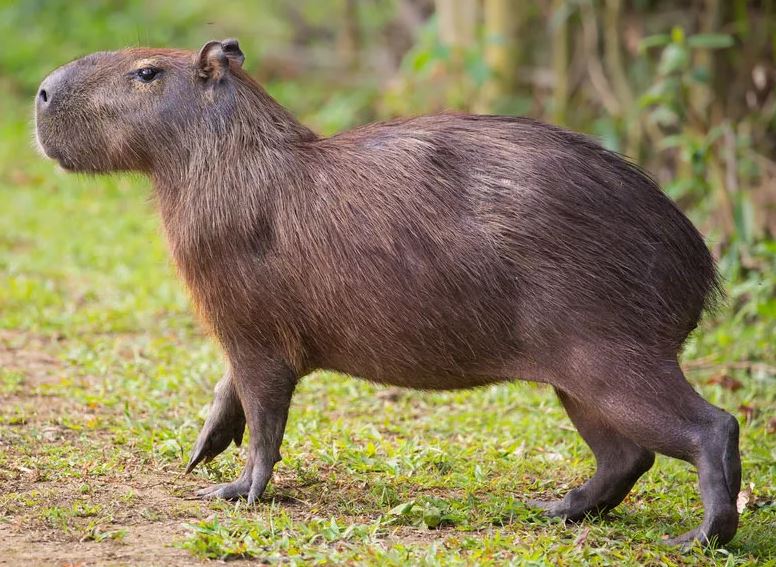
Many people have wondered to know how these two capybaras species come in different sizes. To start with, the disparity in their sizes comes down to their lifestyle and environment. While the larger capybara is known to occupy forests and areas with proximity to water sources, the lesser capybara are found in dry forests, with little or no access to water sources.
Furthermore, the larger capybara feeds on a rich collection of aquatic plants, vegetation, tree barks, grasses, melons, and even small turtles. The lesser capybara feeds on fruits, leaves, and stems.
Conclusion
Capybaras tend to grow bigger than most small dogs. They consume a lot of grasses and meals, typically around six to eight pounds daily. The capybara’s diet makes up about 3 to 4% of their body weight. Full-grown adult capybaras typically weigh over 120 to 150 pounds, making them the largest rodents on the planet.
Despite being herbivores, the capybara are very selective of what they eat. They don’t eat all the grasses in the wild but select fresh, high-quality grasses, particularly water plants.
They have a set of strong, long teeth, which help them cut down and chop grasses for consumption. Interestingly, their front teeth never stop growing. Capybara graze grasslands, savannas, and places with rich vegetation.
Suppose you are interested in keeping a capybara, be sure to check the laws in your state or area. That would help you understand whether keeping a capybara is legal or not. Most importantly, you should prepare a spacious enclosure for the animal due to its large size.


![Capybara Meat And Its Culinary Uses - [Every You Should Know] Capybara Meat & Culinary Uses](https://capybaratips.com/wp-content/uploads/2023/03/Capybara-meat-250x200.webp)
